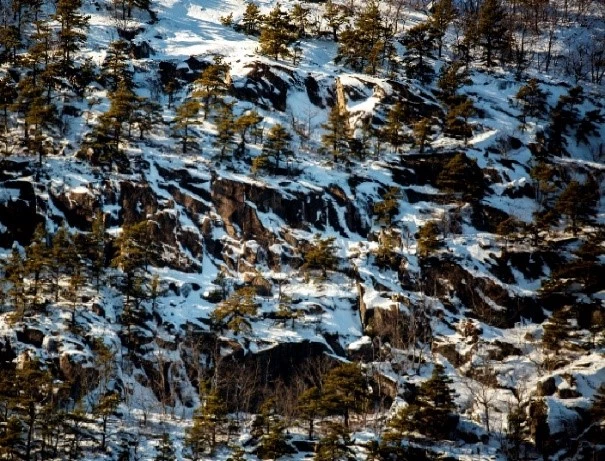Last updated: October 5, 2020
Article
Small Mountains, Big Dreams

Photo by Emma Forthofer, Friends of Acadia, NPS
Life is hard for plants on these exposed granite peaks. Most subalpine zones are between 10,000 and 11,500 feet in elevation, with trees that are often short, knotted, and crooked. Therefore, Acadia National Park’s tallest mountain, Cadillac Mountain, is not considered subalpine due to its 1,530-foot stature (466.3 meters). Despite its short stature in comparison with other mountains, Cadillac Mountain still features subalpine components such as stunted trees.
Why are the trees so short?
The shallow, dry, and thin soil makes it difficult for plants to get important nutrients. Outcrops of open rock support low-lying shrubs and grasses, as well as other sparse plants, in cracks of granite and exposed rock. Granite is nonporous and does not hold water; the trees therefore do not retain much moisture. Strong winds from the Atlantic Ocean also play a role in drying out leaves and needles.
The harsh winter conditions of Acadia National Park also play a role in limiting tree growth. Although the park can receive over 100 inches of precipitation in a year, more than half is often snow or ice. A scarce water supply can limit the trees’ growth, leaving them stunted. Unforgiving winter winds can also leave trees looking gnarled.
Acadia National Park is located between two ecoregions: the northern boreal forest and the eastern deciduous forest. This allows Acadia to support a large diversity of plant species. Take a deep breath of the mountain air and you will most likely smell the mighty balsam fir. Acadia’s mountaintops also have a wealth of pine and spruce trees. Low laying juniper and wild Maine blueberries also line the trails on the granite-exposed summits. You may also see pitch pine and jack pine trees which are more common in forests farther north.
While it is fun to explore the ecosystems Acadia National Park has to offer, note that these habitats are very fragile. It is important to protect plants and rare species within the park such as threatened mountain firmoss and Nantucket shadbush. Make sure to stand and travel on durable surfaces, and do not step on or disturb plants. Conservation of scenery and nature today ensures Acadia National Park is available tomorrow.

Photo by Ashley L. Conti, Friends of Acadia, NPS
